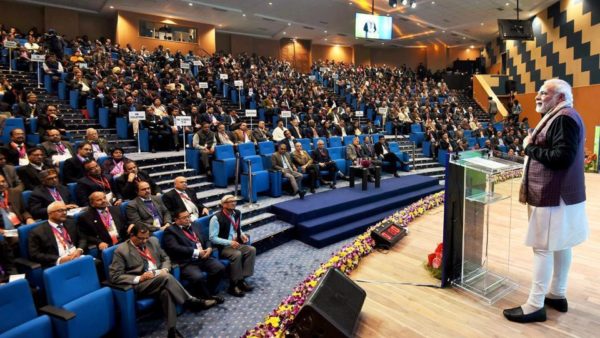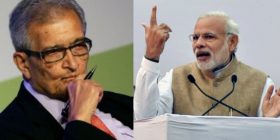On Sunday morning, in his monthly Mann ki Baat address, Prime Minister Narendra Modi once again invoked BR Ambedkar and said that new India is Ambedkar’s India.
The reference fit into the Bharatiya Janata Party’s institutional and the Prime Minister’s personal push to win over a substantial section of the Dalit electorate by paying respect to the man many Dalits deify. In 2014, the BJP swept reserved seats in north, central and western India. Data from the Centre for Study of Developing Societies (CSDS) also suggests that for the first time in Indian electoral history, the BJP won more Dalit (and tribal) votes than the Congress. Since then, Modi has symbolically sought to own Ambedkar and his legacy.
But the BJP faces some problems in its outreach to Dalits.
The first issue is that a key concern of Dalit politics — representation — remains largely unaddressed. Scan through a list of the BJP’s top office-bearers; the Union cabinet; the council of ministers in key states where BJP is in power, including UP; or key political appointments that have been made post 2014 — Dalits have bagged much less share of the power than their population share would suggest. Representation is not everything and there is enough in Indian politics to suggest that the benefits of representation of the subaltern are monopolised by a few representatives rather than the community. But that is a larger problem of representative democracy. For Dalits, representation is a key barometer and BJP appears to be behind on this front.
The second problem is not of BJP’s doing, but institutional constraints, and the need to comply with judicial directives have affected two major policy issues in the past few weeks.
First, in line with a court order, the government had to decide that reservations of teachers would happen by considering departments, rather than the entire university as a unit. This sparked outrage among Dalit academics and students. They argued that when reservations happen at the level of the university, reserved seats are higher, and these would dip considerably under the new policy. The government also got flak from the parliamentary committee on SC/ST welfare for this. Second, the Supreme Court decided to dilute the provisions of the SC/ST Prevention of Atrocities Act. This sparked concern that the act itself would be rendered ineffective, and Dalit MPs and ministers spoke out against it.
In both cases, the government is considering filing a review petition. But in terms of optics, the BJP came across as responsible for specific actions which many Dalits think are against their interests.
The third problem for the party is that the government is unable to provide and create jobs — this affects everyone, but young Dalits even more sharply because they do not have any cushion or pathway for upward mobility. What adds to the trouble for the party is the shrinking of government jobs. A Dalit economist, who is sympathetic to the BJP and did not want to be named, reeled a list of government services where positions had been cut and said, “Dalits feel that because the government does not want reserved jobs, they are doing away with jobs altogether.”
And finally, the BJP’s Dalit outreach is work in progress because it has, historically, had an upper-caste base. This tension is now playing out. Many upper-caste lobbies feel empowered with the BJP in power. The party leadership, for fear of antagonising its older loyalists, does not intervene sharply enough and loses credibility among the newer Dalit supporter or fence-sitters.
In 2014, and in Uttar Pradesh in 2017, the BJP’s incremental vote came from subaltern communities such as Dalits. It helped that many Dalit communities were willing to give the party a chance since they were disillusioned with their own representatives. In 2019, retaining and expanding this constituency will be the PM’s big challenge. Invoking Ambedkar will help but dealing with the underlying structural challenges of representation, atrocities, jobs, reservations, violence — issues which really matter to the Dalits — is more critical.






Leave a reply